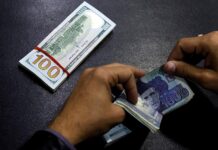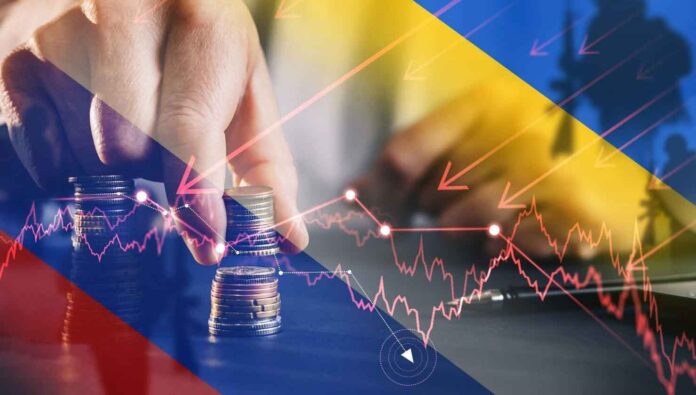MOSCOW: February 24th will mark one year since Russian tanks rolled into Ukraine in what was the start of Moscow’s full-blown invasion of its neighbour. Though Ukraine has, remarkably, survived as a sovereign state, it continues to suffer from round-the-clock artillery bombardment.
But in addition to the thousands of civilian deaths, millions of refugees and extensive infrastructure damage in Ukraine, countries far beyond its borders are feeling the detrimental effects of the war.
As a second-order effect of Russia’s invasion, tens of countries’ currencies cratered against the United States dollar in 2022, which raised the cost of imports.
Luc Verfaille, who owns a home appliance company in Cape Town, South Africa, told Al Jazeera that “to absorb the higher expenses from rand [South Africa’s currency] depreciation, we had to cut our overheads, including on staff”.
Given the complex interplay between geopolitics, commodity prices and financial markets, Russia’s invasion sent shockwaves across the global economy, including developing countries. Admittedly, the implications both within and between developing nations have varied. However, there have been some common challenges, including from higher commodity prices.
Even before the war, the global recovery from COVID-19 galvanised the market for commodities. Pent-up demand from national lockdowns and colossal economic stimulus programmes spurred rapid price gains. These trends were amplified by the war.
The energy component of the S&P Goldman Sachs Commodity Index, for instance, ended 2022 10 percent higher than what it was at the start of the year. Between January and June, it climbed by 68 percent. Given Russia’s key energy market status in 2021 — accounting for 14 percent and 18 percent of global oil and gas production, respectively — the war triggered uncertainty over constrained supplies.
But Russia’s hydrocarbon output has been largely unaffected by the military conflict and the ratcheting up of sanctions have, so far, had a muted effect on Russia’s “resilient” energy supplies, according to the International Energy Agency. For the most part, Moscow has managed to reroute European pipeline exports to emerging market countries like India, China and Turkey — albeit at discounts relative to market prices.
Across the European Union, meanwhile, gas flows from Russia fell by 80 percent between May and October. Pipeline constraints threatened swathes of energy-intensive industries, and European countries resorted to liquified natural gas (LNG) to keep factories from shutting.
Energy and food importers dealt a blow
Europe’s scramble for new LNG supplies triggered price rises in the immediate delivery (or spot) market. The benchmark spot price for Asian LNG reached a record high last year, leaving numerous developing countries in the region exposed to power shortages.
For some energy exporters, like Nigeria and Angola, higher oil prices were partially offset by the increased costs of maintaining expensive petrol subsidies. Clearly, oil importers with petrol subsidies in place, such as Kenya and Ethiopia, fared even worse.
Similar strains have surfaced in countries with large food subsidy programmes. Before the war, Russia and Ukraine were among the world’s top suppliers of barley, maize and sunflower. Supply of these and other staples were critically affected by Russia’s invasion.
The two countries accounted for almost 30 percent of global wheat exports in 2021. But owing to Russia’s blockade of Ukraine’s Black Sea ports, a major shipping route for grains, wheat prices rose by 35 percent in 2022 from the previous year, reaching a record high in March.
Countries like Tunisia, Morocco and Egypt — one of the world’s largest importers of wheat — were badly hit. Roughly two-thirds of Egypt’s population receive five loaves of bread, known as eish baladi, every day, costing them just $0.5 a month, well below market costs. The difference is covered by a bread subsidy programme, which cost the government $2.8bn last year.
Last June, Egypt’s finance minister noted that elevated wheat prices would raise the cost of the country’s bread subsidy program by $1.5bn in 2022-23. Groaning under the weight of expensive food programmes, the government was recently forced into accepting a $3bn loan from the International Monetary Fund (IMF).
As with other IMF programmes, lending was conditional on “fiscal consolidation”. Provided that Egypt’s government adheres to a program of cutting state expenditure, it will receive regular loan instalments over the next four years. Though austerity measures typically accompany IMF programmes, they have been criticised for exacerbating social unrest.
‘World hunger remains severe’
“In countries with outsized wheat subsidies, price rises have had humanitarian and fiscal costs. More generally though, world hunger remains severe,” said Maximo Torero, chief economist at the United Nations Food and Agriculture Organization (FAO).
In 2022, the FAO’s annual food price index, which measures changes in international food prices, was up by 14.3 percent from the previous year and 46 percent higher than in 2020. As a result, 222 million people worldwide experienced acute food insecurity last year.
“The international community needs to adopt a portfolio approach to improve food resilience in developing countries,” Torero said, referring to international trade bodies, multilateral development banks and even private corporations. “First, farming and catastrophe insurance schemes can be improved. Second, food import sources should be diversified and export restrictions removed. And third, we can build back better by investing more in the developing country’s agricultural system.”
IMF loans become more expensive
Meanwhile, war-induced inflation prompted the United States Federal Reserve, as well as other leading central banks, to hike interest rates. Over the past eleven months, the Fed raised its benchmark rate by approximately 4.5 percentage points in an effort to slow price rises.
Attracted to higher yields in the US, investors withdrew their funds from developing country financial assets. The financial exodus led to widespread currency depreciations for developing countries against the US dollar. On top of higher import prices, a country’s plunging currency also makes servicing foreign debt more expensive.
To cover the shortfall, mature emerging economies like Brazil and India issued bonds in their own currency. To halt depreciations, they also drew down large stockpiles of international reserves. But for most of the developing world, these measures were not an option.
With little recourse to borrowing from international private lenders, official bodies like the IMF stepped in to fill the gap. An analysis of IMF lending by Boston University showed that, by the end of 2022, the volume of loans disbursed by the IMF totalled $95bn in 27 separate programmes. This was greater than the credit outstanding at the end of 2021, already a historical annual peak.
“A problem for developing countries”, as Argentina’s former Minister of Finance Martin Guzman observed, “is that IMF lending has become more expensive too.” He was referring to the IMF’s international reserve currency, known as Special Drawing Rights (SDRs).
The SDR rate is a weighted average of borrowing costs from the five countries that make up the IMF’s reserve currency. “In 2022, IMF lending rates rose in tandem with the monetary tightening conditions in four of those five countries,” he said in reference to the US, the United Kingdom, Japan, China, and the Euro area.
Guzman added that “IMF lending to poor countries should avoid stoking inflationary cycles” from the advanced economies which constitute the SDR basket and focus instead on balance of payments challenges in borrowing countries.
“To cope with a significant number of sovereign defaults over the coming years,” there should be an independent debt authority as opposed to a lending institution like the IMF which could preside over restructurings in a “timely and effective way”, Guzman said.
Based on a standardised set of legal principles, a global bankruptcy court could provide enhanced creditor-debtor coordination compared with the current market-based approach.
While the idea has received support from the UN, it is unlikely that the US and the United Kingdom — under whose laws most government bonds are issued — would cede the sovereignty of their courts to a supranational body. But as Guzman pointed out, “the system we currently have in place leaves debtor countries with too little and too late.”
Together with an uneven recovery from COVID-19, a surge in food and energy prices as well as widespread currency depreciations, the war in Ukraine has only added to an already hostile environment for debt-distressed developing countries.

























War really affects economies around the world.